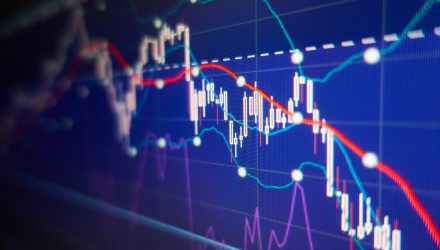2018 saw the Dow fall 5.6 percent, while the S&P 500 lost 6.2 percent and the Nasdaq Composite fell 4 percent–the worst year for stocks since the financial crisis more than 10 years ago. December alone resulted in the Dow falling 8.7 percent and the S&P 500 losing 9 percent, making it the worst December since 1931.
Part of the blame can go to rising interest rates–four rate hikes were instituted by the central bank in 2018. A more dovish Fed following the last rate hike in December could pare down the number of rate hikes even more.
“Although the Fed is expecting to raise rates twice next year (2019), bond yields continue to forecast less than that,” Lack noted. “For fixed income investors, it continues to be hard to beat inflation after taxes. Equities are cheap as shown recently by the Equity Risk Premium (see Stocks Are the Cheapest Since 2012). The American Energy Independence Index yields 6.9%. Bonds are unlikely to provide much value.”
For more market trends, visit ETF Trends.

